Nikon Nikkor AF-S 28-300 mm f/3.5-5.6G ED VR
8. Vignetting
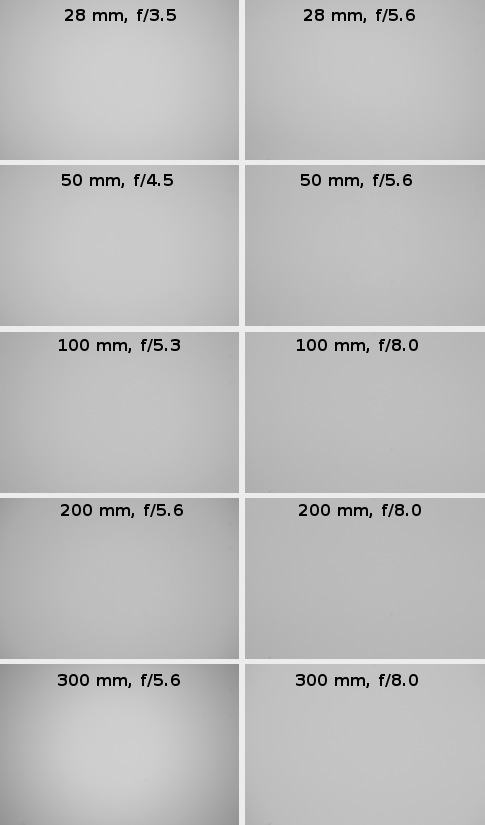
At 28 mm and maximum relative aperture the vignetting amounts to 18% (-0.57 EV). This value is not high but unfortunately on stopping down the vignetting decreases slowly. By f/4.0 it is 15% and by f/5.6 it remains still 12%. Further stopping down is not very effective because by f/8.0 and f/11 the brightness loss in the frame corners gets to respectively 11% and 10%.
Please Support UsIf you enjoy our reviews and articles, and you want us to continue our work please, support our website by donating through PayPal. The funds are going to be used for paying our editorial team, renting servers, and equipping our testing studio; only that way we will be able to continue providing you interesting content for free. |
- - - - - - - - - - - - - - - - - - - - - - - - - - - - - - - - - - - - - - - - - - - - - - - -
At 50 mm focal length, even wide open, the vignetting is barely noticeable because it amounts to 14% (-0.44 EV). If you implement the f/5.6 aperture you can eliminate the problem completely because the vignetting decreases to 9% then. Similar performance can be noticed at 100 mm. By f/5.3 the light fall-off in the frame corners is 13% (-0.39 EV) and it decreases to 6% by f/5.6.
At the longer end of focal lengths’range the vignetting starts increasing. At 200 mm it is not very noticeable because it comes to 18% (-0.56 EV) at the maximum aperture and then it decreases to 5% on stopping down by 1 EV. As we mentioned before, small problems occur at 300 mm where, at the maximum aperture, the vignetting reaches 29% (-0.98 EV). Luckily on stopping down to f/8.0 the vignetting decreases to an imperceptible level of 7%.
Let’s check what the situation looks like on full frame.
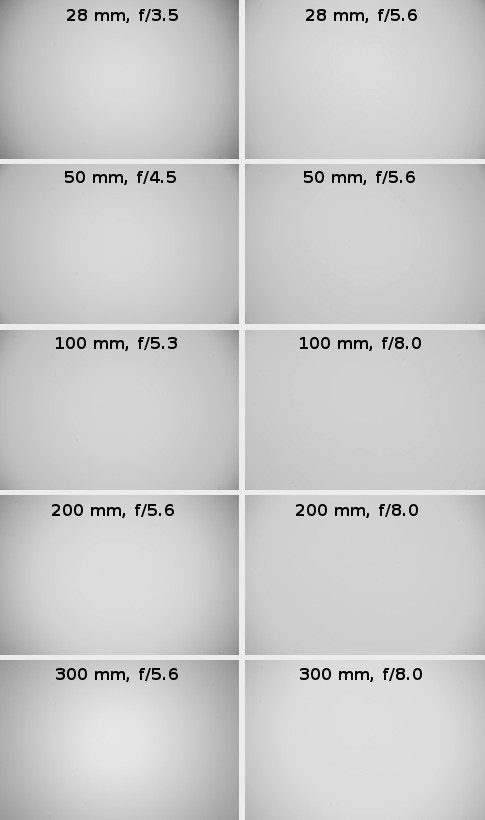
Undoubtedly there will be more problems here. They start to occur at the shortest focal length where, at the maximum relative aperture, the vignetting amounts to 45% (-1.72 EV). The same performance we observed in the case of the D200 – here also the stopping down yields rather unsatisfactory results. By f/4.0 the vignetting comes to 38% and by f/5.6 it reaches 27%. On further stopping down we don’t see any influence on the level of this aberration because by f/8.0 and by f/11 its value is the same – 19%.
A bit better situation can be observed at 50 mm. Here the lens shows the vignetting on the level of 31% (-1.09 EV) when wide open and it decreases to 22% if the device is stopped down to f/5.6. Only after closing the aperture down to f/8.0 and f/11 we see the problems disappear because the brightness loss in the frame corners is respectively 12% and 10%.
Very similar situation can be noticed at 100 mm. At the maximum relative aperture (f/5.3) the vignetting value measured by us amounted to 29% (-0.99 EV) and after stopping down to f/5.6 it reached 28%. By f/8.0 the problem disappears almost completely because the vignetting decreases to a practically imperceptible level of 12% and it is eliminated completely by f/11 (7%).
The vignetting increases again at the longest focal lengths. At 200 mm and by f/5.6 the brightness loss in the frame corners amounts to 34% (-1.22 EV). By f/8.0 and f/11 apertures it is respectively 17% and 10%. Practically identical situation can be witnessed at 300 mm focal length –there by f/5.6, f/8.0 and f/11 we get the results of 34%, 19% and 10% respectively.
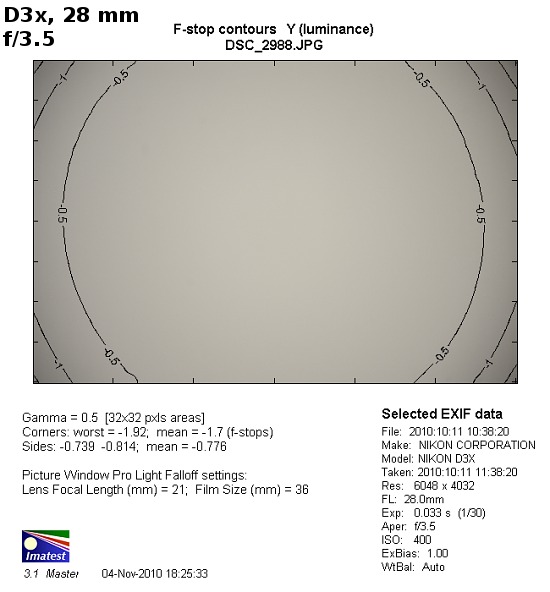 |
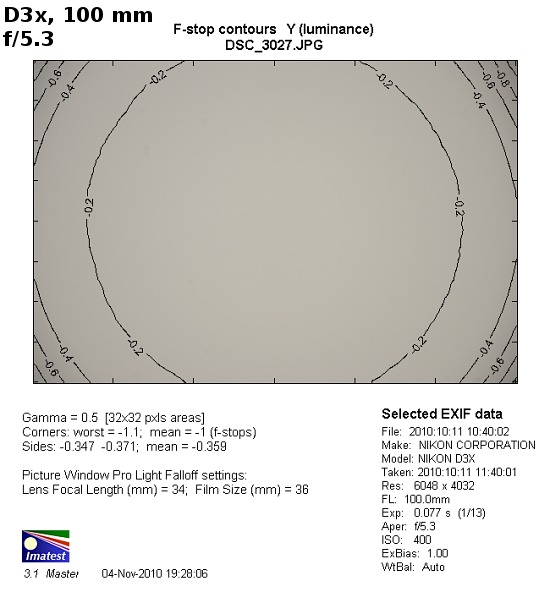 |
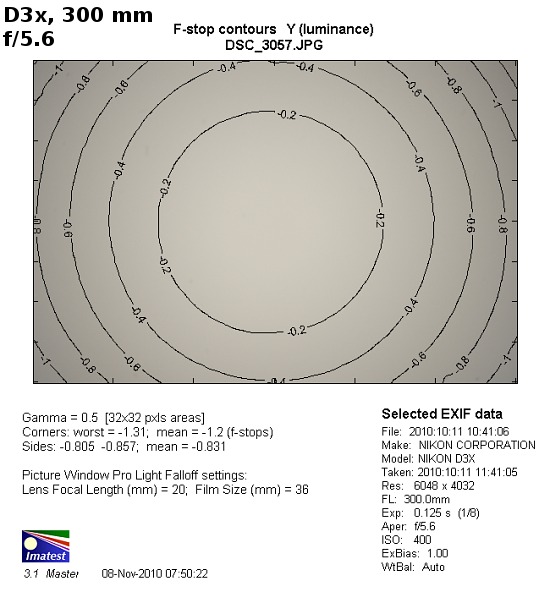 |






